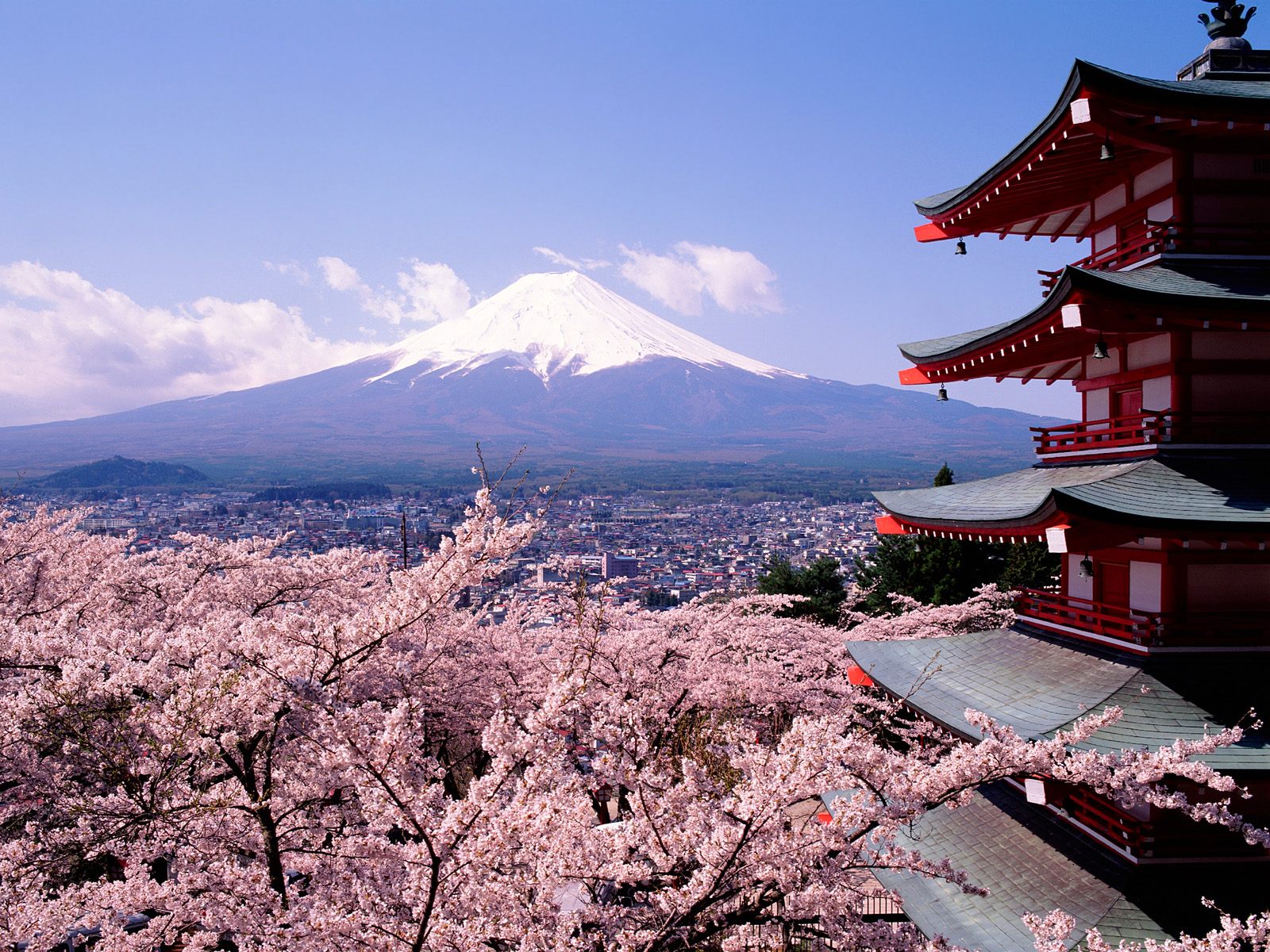Mt. Fuji can often be seen at its majestic best in the clear air of winter . The cherry blossom, the national flower, is also a symbol of life's
transience
In spring, one of the best-loved symbols of Japan makes a dramatic sweep across the country. Sakura (cherry blossoms) bloom usually from the end of March through April in a kind of wave starting in southern Kyushu and working its way northeast. News reports keep the populace up to date on the best places to enjoy hanami (lit. flower viewing). The hanami tradition has been popular since the Heian Period (794~1185) and is a good example of the Japanese view of beauty in nature. The undeniable beauty of the delicate pink flowers is offset by a sense of melancholy at their all-too-brief appearance. This is often compared to our own short time spent on the earth. This mixture of feelings is best expressed when completely drunk, of course. And so every year, hundreds of thousands of Japanese of all ages gather beneath the pink blooms, sing karaoke, dance and drink till they fall over. Ironically, one popular hanami spot in Tokyo is the Aoyama Bochi (cemetery). Those resting under the rows of tombstones are almost forgotten as they are sprinkled with falling blossoms and the ocassional spilled beer. See our hanami page for more.
Though not counted as one of the four seasons, there is enough rain in June for it to be called tsuyu (the rainy season). Ajisai (hydrangea) blooms turn a pale lilac and then a deep blue as the rain continues to fall. Japanese people seem to have a bit of a rain phobia at the best of times, judging from how quick they are to use their umbrellas, but at this time of year, trying to manoeuvre through thousands of the things is a life-threatening experience. And no sooner has the rain showed signs of easing than the thermometer and hydrometer go through the roof and the hot, humid summer is underway.
The blue flowers of the hydrangea signal the coming of the rainy
season
Suikawari - Split the Watermelon - is a popular summer beach game
The end of summer and beginning of autumn sees the arrival from the Pacific of typhoons, tropical storms equivalent to hurricanes in the West. Most typhoons hit the Kyushu region first and then proceed across the country, wreaking havoc. Some of the worst typhoons have killed thousands of people. A typhoon was also responsible for sinking the fleet of the invading Mongols in the 13th century, earning itself the name kamikaze (divine wind). September is the time for tsukimi (moon viewing). Like hanami, it is a tradition dating from the Heian Period although it is not as popular today. As the weather cools in October and November, leaves begin to change color and suddenly the landscape is a dramatic palette of red, brown, orange, yellow and green. The koyo (red leaves) of late autumn are an often breathtaking sight, especially against a backdrop of Mt Fuji or a temple in Kyoto.
Sumber: http://www.japan-zone.com/culture/season.shtml










No comments:
Post a Comment